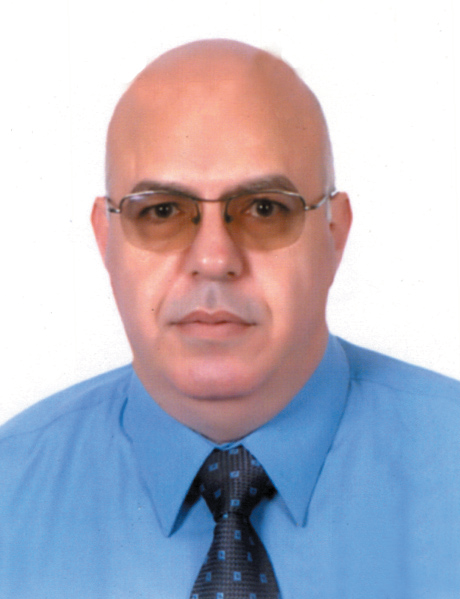Pulmonary Manifestations
Pulmonary Manifestations
of Thyroid Disorder
Ahmed Nafeh
MD,FCCP Pulmonary Consultant
Ain Shams University Hospital
Thyroid disordersA-GoiterB-Hyper & hypothyroidismC-Paratyyroid disordersD-Riedel´s thyroiditisA-Goiter (enlargement of thyroid) Both extra & intrathoracic goiter can produce respiratory symptoms. Intrathoracic goiter is defined as any thyroid enlargement that has its greater mass inferior to the thoracicinlet. Goiter is rarely functioning but calcification is very common. Thyrotoxicosis, malignant change & hemorrhage may complicate goiter Most cases of extrathora.goiter have no symptoms. Also, the majority of intrathoracicgoiter produces no symptoms. They are discovered accidentally on routine CXR as an ant.med.mass. When it produces symptoms itleads to: # Tracheal compression, stridor hoarseness of voice & horner'ssyndrome . # Dyspnea, dysphagya, SVC abstruction & chylothorax may also accur due to compression ofbrachiocephalic or thyroid duct.# Cough & wheezes. # Acute tracheal abstruction has been noted due to multiple foci ofhemorrhage.B-Hyperthyroidism:1-Thyrotoxic dyspnea2- Exacerbation of asthma
3- Anterior mediastinal mass 4- Aspiration pneumonia &respiratory failure 1-Thyrotoxic dyspnea is dypneaat rest which occurs due to : a-Reversible proximal myopathy which decreased compliance &increased dead space ventilation . b-Increased work of breathing to cope with the greater oxygen uptake by the hyper metapolic bodytissues. 2-Exacerbation of ashma : causesa-Thyrotoxic dyspnea . b- Decreased CAMP, decreased caticholamines & adrenergicresponse in bronchial tree c- Increased metabolism ofbroncodilators . d- Use of ß- blochers in treatmentof thyrotoxicosis. 3-Anterior mediastinal mass (due to benign thymic hyperplasia which may complicate thyrotoxicosis by unknown mechanism ) maycontribute to dyspnea . 4- Aspiration pneumonia & respiratory failure may occurs secondary to bulbar palsy complicating thyrotoxicosis.Hypothyroidism: 1-Depressed respiratory center2-Hypoventilation3-Sleep apnea4-Pleural effusion 5-Decreased bronchospasm inasthma
6-Shift to the left of oxy-hemoglobin dissociation curve.7-Pulmonary infiltrate 1-Depressed respiratory center: may occur due to: decrease response to hypercapnea, decreased hypoxic drive & centralsleep apnea. 2-Hypoventilation: may occur dueto:-Depressed respiratory center . -Neuropathy & myopathy disturbed neuromusculartransmission. -Diaphragmatic dysfunction due tophrenic nerve neuropathy . N.B. Myxedema coma is common in old obese females due toexcessive hypoventilation. Myxedema coma may becomplicated by asp.Pneumonia .3-Sleep apnea: 1- Obstructive 2- Central Obstructive in hypothyroidism occurs due to macroglossia & narrowing of the upper airway sec.to submucosal deposition of mucopolysacosarides and proteinextravasation. Central occurs with hypothyroidism due to depressed ventilation control Thyroxine replacement therapy decreases apnea frequently evenwithout change in body weight . 4-Pleural effusion myxoedema Pleural effusion: directly orindirectly. Directly due to increased pleuralcapillary permiality . Indirectly secondary to ascites orconjestive heart failure (C.H.F)Treatment : thyroxine. 5-Hypothyroidism decreases bronchospasm in asthma, so thyroxine replacement therapy may lead to worsening ofasthma. 6-Shift to left of O-HB dissociation curve worsening of O2 supply to tissues than what isindicated by hypoxia alone. 7-Patchy pulmonary infiltrates : pathogenesis is unknown but may be se´condary to atelectasis from defective surfactant formation inhypothyroidism. C- Parathyroid disorders: Hyperparathyroidism in parathyroid tumors may lead to hypercalcemic crisis, pulmonary edema andmetastatic pulmonary calcification. Different causes of metastaticpulmonary calcifications.: -Common causes : primaryhyperparathyroidism -Chronic renal failure -Malignant tumorsLess common causes: -Sarcoidosis -Hypervitaminosis D -I.V.Ca infusion-Milk alkali syndrome & BerylliosisD. Riedel's thyroiditis : It is a rare disease characterized by: extensive dense fibrosis of the thyroid gland extending into the strap muscles and adjacent structures in the neck leading to tracheal compression leading to dyspnea, cough, stridor & massive fibroticprocess in both upper lobes. N.B. 1-Hashimoto's thyroiditis is an autoimmune thyroiditis leading tosever upper airway obstruction . 2-Treatment by KI in a goitrouspatient may lead to thyrotoxicosis. KI in a normal person may lead to goitrous hypothyroidism


 info@utopiapharma.com
info@utopiapharma.com
 Plot No. (2) Industrial Zone (A7) - formerly Zizinia - Cairo - Ismailia Road - 10th of Ramadan - Sharkia
Plot No. (2) Industrial Zone (A7) - formerly Zizinia - Cairo - Ismailia Road - 10th of Ramadan - Sharkia